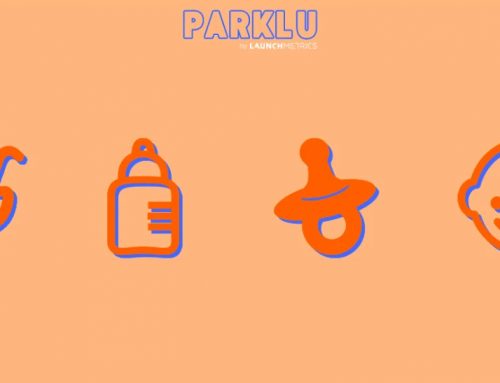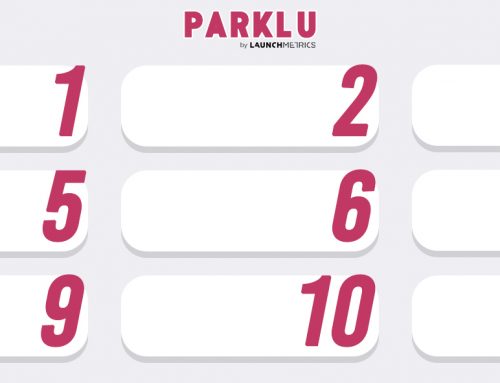China’s KOL landscape can seem like an endless vortex of options. But, to really understand the KOL world means having a handle on a growing management phenomenon that essentially makes up its core: Multi-Channel Networks (MCNs).
In the U.S., the MCN is synonymous with failure. Marketers might remember that the most well-known MCN, YouTube’s Maker Studios, was bought out by Disney for $675 million in 2014 because it was struggling to produce any real progress. The network crumbled under overambitious growth targets, the lack of content ownership, and lack of diversification. To top it all off, once Maker Studios was under Disney’s watch, it dropped its highest earning YouTuber, PewDiePie, in 2017, after he was accused of posting a video with anti-Semitic comments.
Networks like Maker Studios built their follower base by creating tens of thousands of YouTube video channels, promising influencers access to these followers and promising brands access to the influencer talent, creating more boon for advertisers. Maker Studios, with the help of Disney’s IP, was able to also create some of its own content. But for the most part, it remained difficult for the MCN to monetisee as the middleman from YouTube’s ad revenue model.
Adding to the complications, Multi-Channel Networks themselves rarely had access to the library of content that was being generated by all of its creators. David Bloom writes in Tubefilter, “Unlike a movie studio such as MGM … the MCNs didn’t have a deep collection of digital content that could be sold and resold. Instead, the MCNs had relationships, and short-term contracts, with young people in a fluid and still developing industry.”
But in China, the MCN ecosystem is thriving—there are thousands of MCNs in China, and that number is still growing. And while MCNs can mean a boon for consolidating KOL resources across platforms, their pervasiveness generally means that it can be difficult for brands to work with KOLs without going through an MCN first. The vast majority of top-tier and mid-tier KOLs in China are currently working with an MCN.
How Chinese Multi-Channel Networks Work
The MCN relationship in China is a symbiotic one that relies on a web of partnerships: the MCN works with the social media platform to attract new followers, usually recommended by the social media platform based on their own algorithms; the MCN provides the social media platform a pre-screened batch of KOLs and content; the MCN helps the KOLs with the professional resources to improve their content; the KOLs gain new fans; and the social media platform can grow their traffic. The goal of the MCN is to grow their own influencer network so that they can boast a huge, but ultimately aggregated, number of followers.
While the typical MCN is going to have hundreds of KOLs, they can vary greatly in size, from an elite group of people that are signed to one company, to smaller groups of KOLs that work together. Some have their own specialities—i.e., one will work with fashion vloggers, another will work food KOLs on Weibo, etc. When a brand comes to them with a marketing campaign request with multiple verticals, multiple MCNs usually need to be approached to deliver a smorgasbord of talent and platforms, said Crystal Xie, a Client Success Manager for PARKLU.
Here’s why it benefits social media platforms:
As social media platforms in China start to mature with higher traffic numbers, it starts to make more sense for them to forge relationships with MCNs as it allows them to move away from employing KOLs directly and focus on other areas of their business. Over the summer of 2018, Douyin became one of the latest major social media platforms to create an official channel for MCNs after months of working with KOLs on a one-on-one basis. Xiaohongshu also works with several major Multi-Channel Networks to manage its “brand verified” KOL community after recently tightening its regulations for sponsored posts, creating a “brand verified bloggers” platform to monitor brand and KOL partnerships.
What do KOLs have to gain?
For KOLs just starting out, MCNs are generally an attractive option as they will offer an opportunity for influencers to more quickly grow their follower base. However in the wild west that is China KOL marketing, sometimes this can even mean that the MCN provides them with a batch of fake followers or even fake impressions to help them grow their numbers more quickly.
Once the KOLs have enough of a following, they can start leveraging it to craft bigger partnerships with Multi-Channel Networks. But, Xie warns, the environment, especially around the major social media platforms, is becoming increasingly cutthroat for access to resources. For example, “Weibo doesn’t allocate a lot of their resources to MCNs or bloggers because they have enough users on the platform,” she said.
Why should brands work with a Chinese MCN?
As mentioned above, it’s nearly impossible to not work with an MCN in China. It’s not very well known, but PARKLU is essentially an MCN aggregator. Most of the curated KOLs in PARKLU’s database work with an MCN, and PARKLU has direct agreements with those MCNs.
In fact, growing an influencer without the support of an MCN is a rare accomplishment. “A very unique combination of talents and connections are required to grow an influencer in China,” said Elijah Whaley, Chief Marketing Officer of PARKLU. “You need to have onscreen talent with special value propositions for target audiences, then that person or that team has to also be really good at consistently creating content, running all of these platforms, and communicating with those audiences.
“Then, they need to be business savvy, they have to negotiate deals with brands and they have to be able to reach brands and brands be able to reach them,” Whaley continued. “So if you think about it, in 99 per-cent of cases you won’t find a team that can do that and make money. They’re going to be lopsided, strong at one or two things but weak in other areas.”
Gaining access to KOLs through Multi-Channel Networks also may be cheaper for the brand as the MCN will generally get traffic package deals with the social media platforms. Whaley said Weibo sells their year-long traffic packages to MCNs at half the price of what they would sell to an individual KOL, knowing that KOLs can only reach about 10 percent of their audience organically.
The dark side of China MCNs
While working with an MCN can simplify a KOL relationship, there are a number of other risks both for KOLs and brands when it comes to working through Multi-Channel Networks.
For KOLs, MCN contracts can be long without being very lucrative. “Even if the KOL is very talented, they don’t get a very fair payment,” Xie admits. “Usually it’s a resources swap—you give us a good post, we give you more followers and more exposure.”
This means that when most bloggers start out with an MCN, their real goal is just growth. As they grow and become a bigger asset to the MCN, they’ll have more opportunities for brand sponsorships—this is usually around 20 to 30 per-cent.
“Some MCNs are taking horrible advantage of these creators,” Whaley said. “The reality is from the day to day you’re doing 99 per-cent of the work, but the MCNs take 70 per-cent of the deals that come through and essentially don’t do anything. That’s just crazy to me.”
Xie said one of the biggest challenges in working with an MCN is the risk of getting low-quality content creators. “A lot of MCNs don’t care about the bloggers’ content—they just want as much content as they can,” she said. “They don’t even know if these KOLs can really represent the brand, they just look at the number of followers they have.”
“It can spell confusion for brands when it comes to working with influencers,” she continued. “They often don’t know which ones will have good sales conversion. And unless they work with them for a long time, they won’t necessarily see results.”
So how does a brand ultimately know if an MCN is working out for them?
“We always suggest that brands experiment with a small budget and test out a campaign,” Xie said. “If you worked with one or two MCNs and got 10 KOLs with not very good results, you’ll know not to work with those MCNs the next time.”
“The reality is all MCNs have good and bad KOLs. This is why PARKLU takes a curated approach to only work with select KOLs from any given MCN,” Whaley said.













Leave A Comment